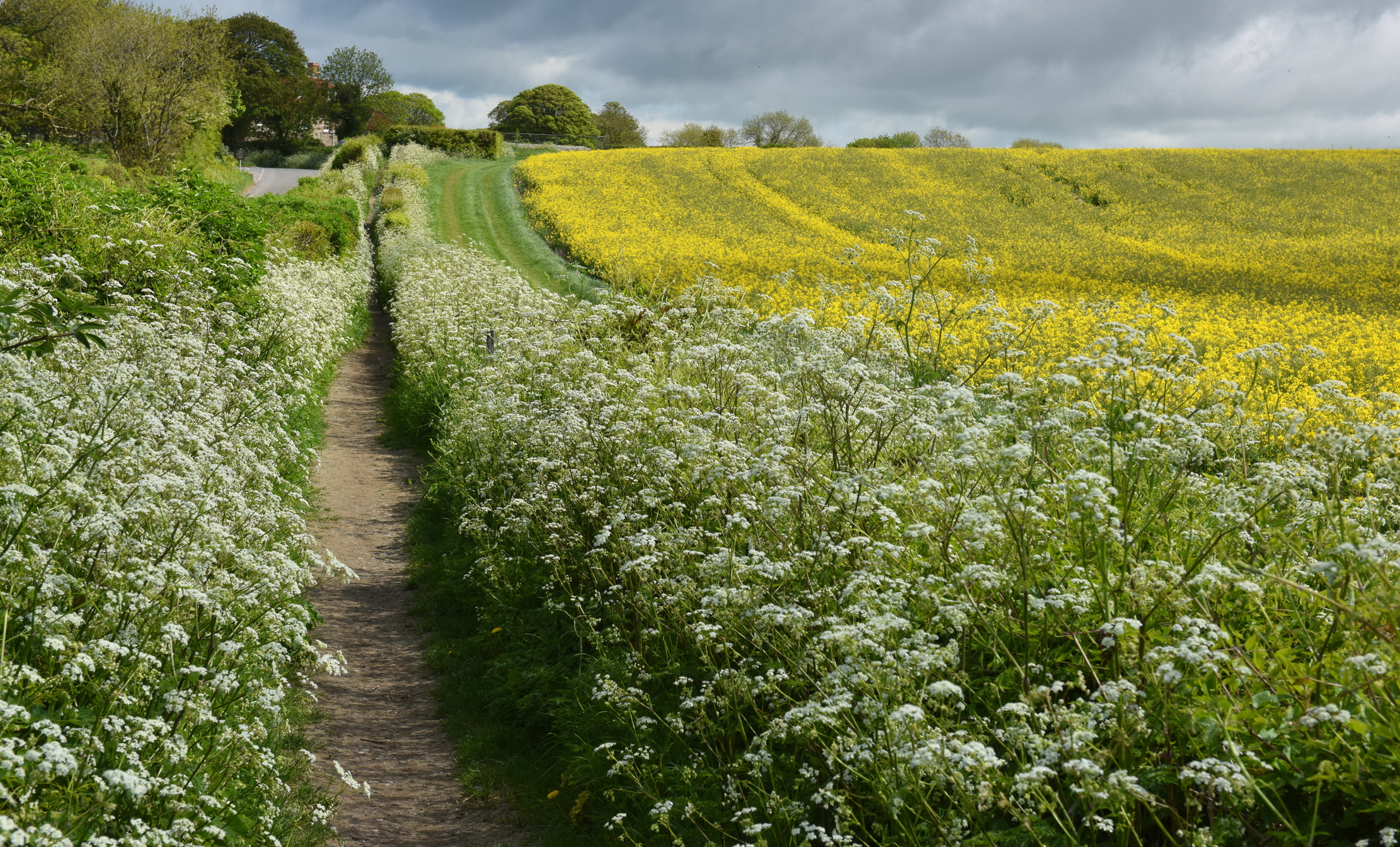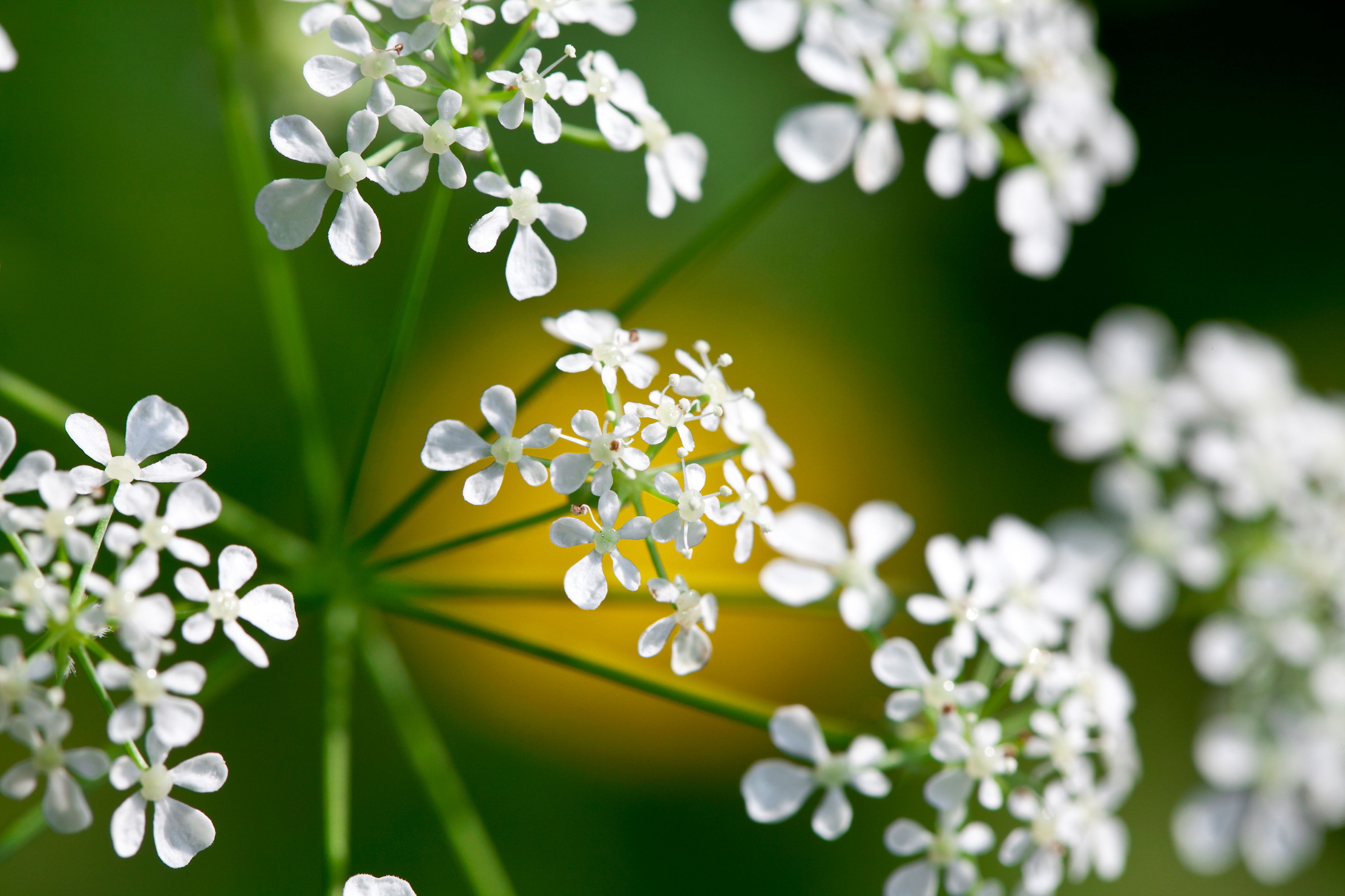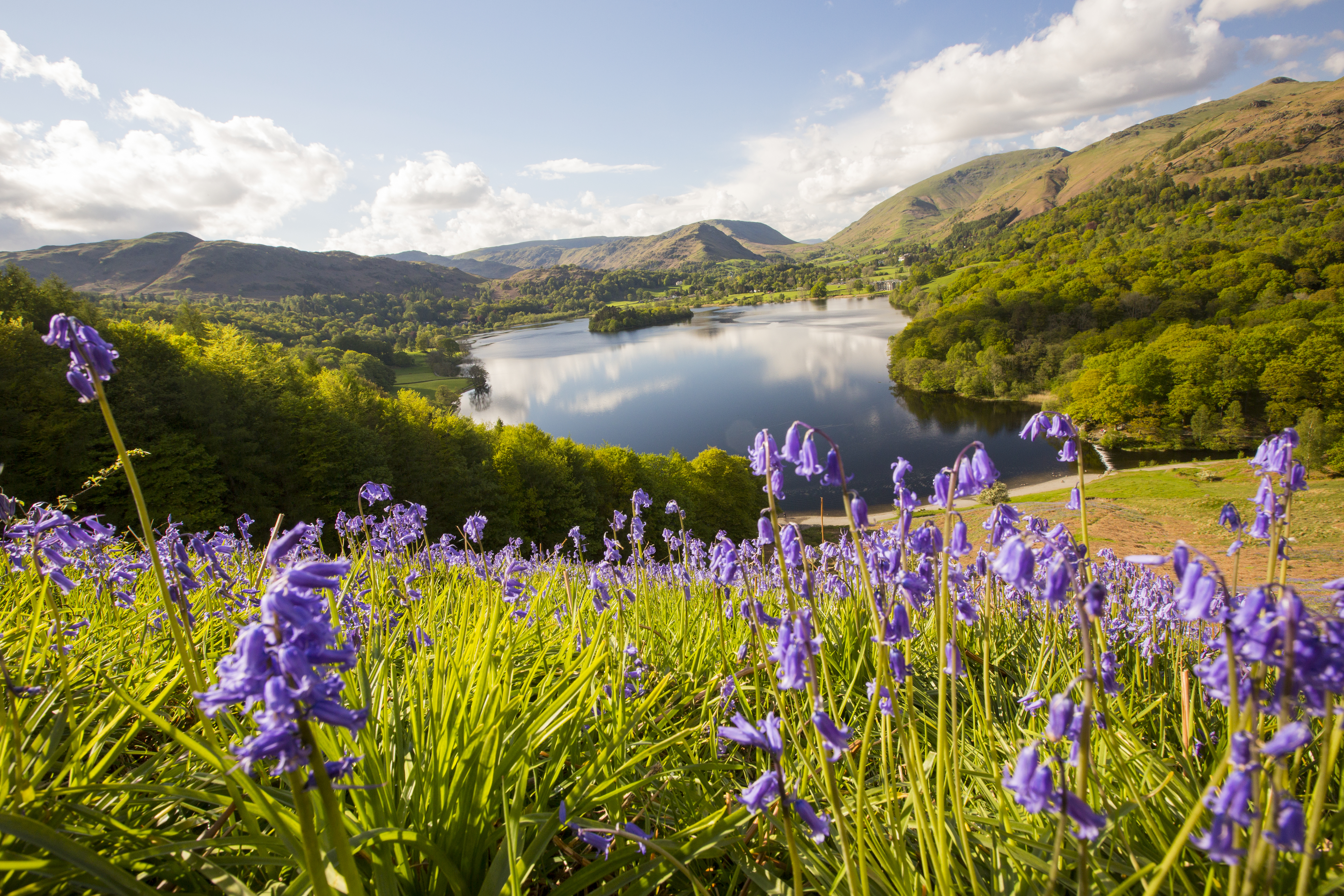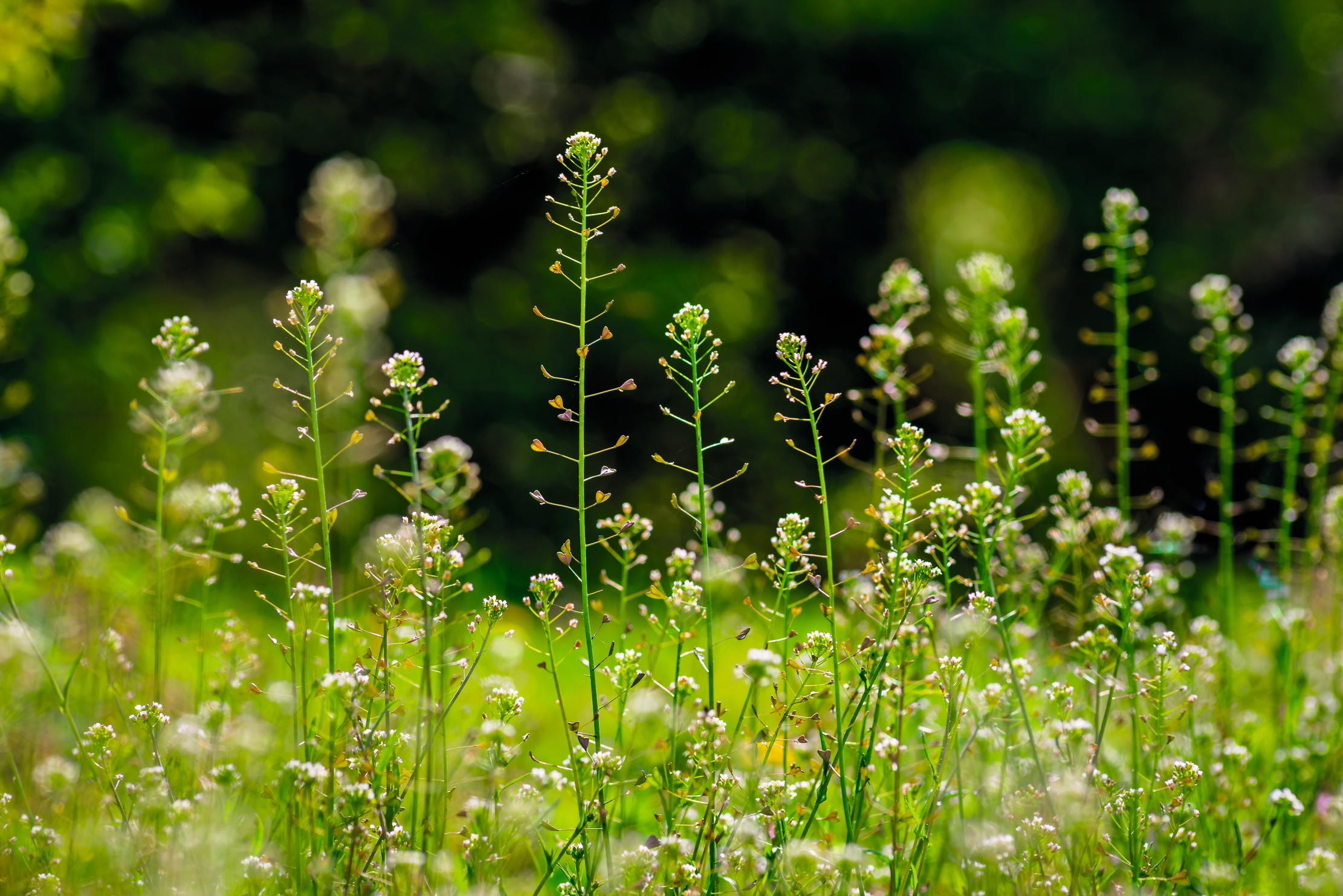'The most important spring landscape flower in Britain' that 'engulfs everything in its path' — The unstoppable exuberance of the frothing cow parsley
A vital source of food in early spring for insects, cow parsley has taken control of the nation's roadside verges, fuelled by increasing nitrogen levels.


From the beginning of May, every country road and lane is lined with the familiar froth of cow parsley. Fuelled by increasing nitrogen levels in the verges, the exuberance of the plant is unstoppable — mile after mile of it bobs and sways to passing traffic like a never-ending Mexican wave. Cow parsley (Anthriscus sylvestris), which is also known by the more decorative Queen Anne’s lace, is the first in a succession of roadside umbellifers that adorns the countryside from spring to late summer. It belongs to one of the largest plant families in the world with more than 3,700 species, some 100 of which may be found in the UK.
The Umbelliferae or Apiaceae, as they are now known, are easily recognised by their elegant, umbrella-like flowerheads, but can be difficult to distinguish individually and include in their ranks some of our most delicious herbs and vegetables, as well as some of the deadliest poisons. With its fresh green, fern-like leaves and hollow, hairy stems holding aloft creamy umbels, cow parsley is the most widely recognised as it romps away along field margins, woodland edges and anywhere the ground isn’t waterlogged. Its flowering coincides with that of the hawthorn and, together in a transient moment in May, they make the landscape look as if it has been sprinkled with flour.
In country churchyards, where cow parsley flourishes, gravestones appear to float magically in a sea of white. Here, as Dr Oliver Rackham wrote in The History of the Countryside, ‘the cow parsley are a memento mori for in them is recycled, while awaiting the Last Trump, part of the phosphate of 10,000 skeletons’. It is particularly striking against a stone-wall backdrop in Cotswold lanes, and, in urban areas, it swathes railway embankments and waste ground in billowing pale clouds.
The alternative name for cow parsley of Queen Anne’s lace harks back to a folk tale in which the flowers were said to bloom for the queen as she journeyed around the countryside with her ladies in waiting; the shape and structure of the flowers reflected the delicate lace worn by her and her entourage. It may also have been a reference to the Stuart Queen’s tragic child losses, but the name has never truly caught on and is sometimes confusingly used for another umbellifer: wild carrot.
'Among the many vernacular names for cow parlsey is the ominous mother die'
Among the many vernacular names for cow parsley is the ominous mother-die, which is thought to have originated as a warning to children who might mistake it for the deadly poisonous hemlock and mildly toxic fool’s parsley, both of which it resembles. The name cow parsley has nothing to do with cows — although they do eat it — and is, instead, a reference to its leaves being an inferior type of parsley.
By the middle of June, the plant starts to give way to some of its relations — rough chervil from July, followed by upright hedge parsley with grey-green foliage and creamy flowers tinged with pink. In the North, the aniseed-scented sweet cicely, with white blotches on its leaves, is almost as ubiquitous along roads as cow parsley in the South. In late summer, the statuesque hogweed arrives with large, plate-like umbels that act as a mini aerodrome for a wide range of pollinators.
At heights of up to 7ft, hogweed is one of the taller umbellifers, but the record goes to its phototoxic alien relative giant hogweed, which escaped from Victorian gardens and is capable of reaching heights of up to 16ft. At the other end of the scale is the tiny pignut, often found in the company of bluebells. Its edible tubers taste a bit like sweet chestnuts and used to be dug up by pigs and children alike, but it is now quite rare due to loss of habitat.
Exquisite houses, the beauty of Nature, and how to get the most from your life, straight to your inbox.
Away from grassland in damp ditches, hem-lock water dropwort holds sway with lush, bright-green foliage and brilliant-white umbels. It looks very beautiful, but all parts of the plant are highly toxic — especially the roots, which look like pale carrots and are sometimes known as dead men’s fingers (‘And so to sleep…’, February 7). According to ancient historians, hemlock water dropwort was used as a form of euthanasia in pre-Roman Sardinia — once ingested, the poison produced a rictus smile on the face of the victim, which became known as the ‘sardonic smile’. Less sinister waterside species include the imposing wild angelica, with pink florets and a purple stem, and the not-so-foolish fool’s watercress, which tastes more like celery than watercress.

In coastal hedgerows, yellow-flowering Alexanders appear from the end of March. Brought over by the Romans along with the dreaded ground elder, Alexanders was a popular vegetable before it was supplanted by celery. Elsewhere, clinging to the cliffs is fleshy rock samphire, a once highly regarded foodstuff that, in the 19th century, was sent regularly from the Isle of Wight to London in casks of sea water.
Feathery fennel, another Roman introduction, is now widely naturalised throughout Britain, particularly around the coast, where it is found on roadsides and sand dunes. In high summer on dry chalky ground, the delicate domed heads of wild carrot with a red dot in the middle are easy to spot and, later, on the same terrain, the acid-yellow wild parsnip, pungent wild ancestor of our cultivated vegetable, arrives, bristling with armies of red soldier beetles.
As one of the first flowering spring umbellifers, cow parsley is an important food source for insects and is host to more than 40 species of beetles, moths, aphids and butterflies. It is particularly favoured by bees and hoverflies for its easily accessible nectar and, on a sunny day, the plants reverberate with the sound of wings. Among the many visitors is the orange tip butterfly, its mottled-green and white hind wings camouflaging perfectly with the flower and allowing it to disappear entirely.
'Although it may not always be welcomed by botanists, no one can deny its unbridled effervescence'
Cow parsley is the closest wild relative to cultivated garden herb chervil and the young leaves have a long history as a human foodstuff — the digested remains of cow parsley were discovered among the stomach contents of an ancient Celt buried in a Cheshire bog. Nature writer Richard Mabey advises picking them as soon as the stems are sufficiently developed for accurate identification and using them in salads and omelettes. In recent years, the plant has also become a perennial favourite with florists and is a popular choice at spring weddings; at the RHS Chelsea Flower Show, its decorative and more restrained cousins regularly grace the show gardens.
Despite being widespread on rough grassland and wasteland, it is still roadside verges that have seen the fastest acceleration in cow parsley numbers: here, it is estimated that the species has increased by 50% in the past 20 years, often at the expense of more delicate wildflowers. Increased fertility on verges as a result of intensive farming and vehicle exhausts has led to a cow-parsley explosion that has been further enhanced by the practice of leaving grass cuttings, which form a nutritious mulch. Each plant yields between 800 and 10,000 seeds, but it mostly reproduces vegetatively by rhizomes and is unaffected by early mowing. In a report by the charity Plantlife in 2021, cow parsley was named as one of the road-side winners, along with nettles and brambles.
In his book Flora Britannica, published in 1996, Mr Mabey writes that ‘cow parsley is arguably the most important spring landscape flower in Britain… no other plant gives so much character to country roads in May’. Today, those same roads are almost a mono-culture as cow parsley engulfs everything in its path. Although it may not always be welcomed by botanists, no one can deny its unbridled effervescence when the jostling crowds of umbrellas, as high as the hedgerow, become the creamy signal of early summer.

The mystery of the hedge: How an exhibition on these living walls seeks to explain our fascination with their place in the landscape
Gareth Gardner wondered if he was the only photographer interested in hedges. Now he has the answer.

18 of the best places across Britain to go and see bluebells this spring
We round up the best gardens to visit to see carpets of bluebells this spring and explain how to tell

Credit: Victoria Moloman/Shutterstock
The neglected weed with 100 different names that 'deserves more than a passing thought'
Shepherd's purse is a common sight in our hedgerows, but there is much more to this plant than what meets
Vicky Liddell is a nature and countryside journalist from Hampshire who also runs a herb nursery.
-
 Brideshead Revisited (again): The 10 scene-stealing British country homes from film and television
Brideshead Revisited (again): The 10 scene-stealing British country homes from film and televisionWhat do an enigmatic Caped Crusader, a sopping-wet Mr Darcy and Lord Eddard Stark of Winterfell have in common? Believe it or not, British country houses.
-
 Sophia Money-Coutts: Is it ever okay to throw your dog a birthday party?
Sophia Money-Coutts: Is it ever okay to throw your dog a birthday party?Sir Lewis Hamilton did it, so why not throw a birthday party for your canine companion, Sophia Money-Coutts asks.
